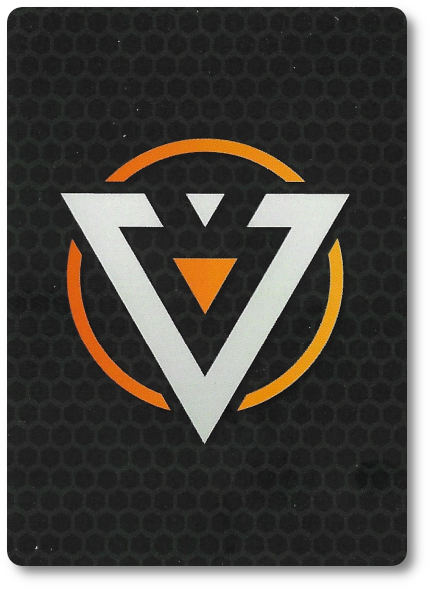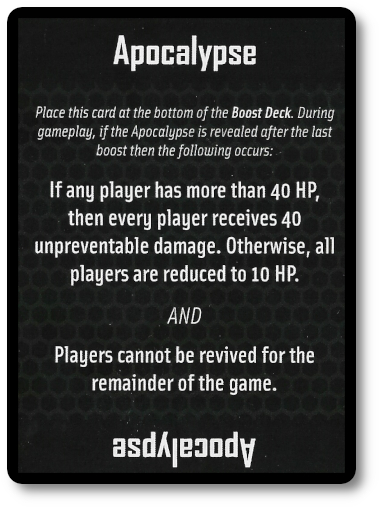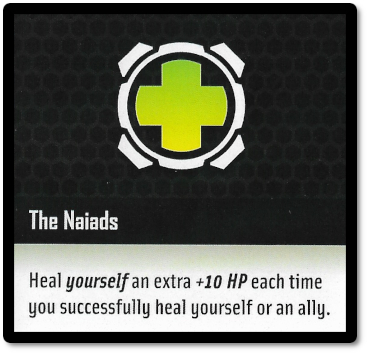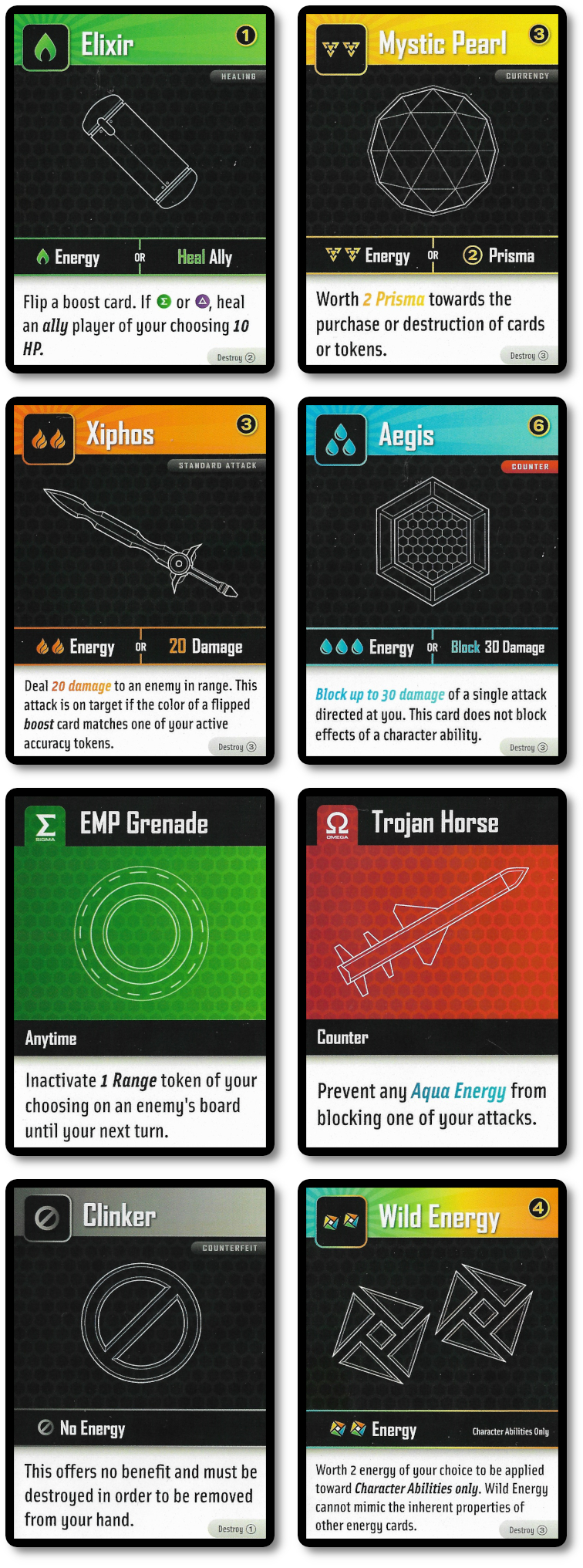Please Take Note: This is a review of the final game, but it might change slightly based on the success of the Kickstarter campaign. The game is being reviewed on the components and the rules provided with the understanding that “what you see is not what you might get” when the game is published. If you like what you read and want to learn more, we encourage you to visit the game’s website or Kickstarter campaign. Now that we have all that disclaimer junk out of the way, on with the review.

The Basics:
- For ages 10 and up
- For 2, 4, or 6 players
- Variable game play length
Geek Skills:
- Active Listening & Communication
- Counting & Math
- Logical & Critical Decision Making
- Reading
- Pattern/Color Matching
- Strategy & Tactics
- Risk vs. Reward
- Cooperative & Team Play
- Hand/Resource Management
Learning Curve:
- Child – Moderate
- Adult – Easy
Theme & Narrative:
- One team of gods to rule them all
Endorsements:
- Gamer Geek mixed!
- Parent Geek mixed!
- Child Geek approved!
Overview
French general and military theorist, Ferdinand Foch, said “The will to conquer is the first condition of victory.” Mankind has grown bold and powerful, turning to their faith in technology rather than the gods. It’s time to put mankind back in its place, but who shall lead? The most powerful? The most cunning? While mankind battles on the earth below, the gods battle among themselves to rule all.
Invictus, designed and to be published by Matt and Steven Ririe and to be published by Tachyon Games, will reportedly be comprised of 48 Prisma Energy cards, 24 Fire Energy cards, 15 Life Energy cards, 15 Aqua Energy cards, 13 Clinker & Wild Energy cards, 12 Character cards, 12 Health Rings, 72 Boost cards, one Apocalypse card, 24 Reinforcement cards, and 62 tokens. As this is a review of a prepublished game, I cannot comment on the game component quality. The artwork provided and early peeks of what is to come is simply outstanding, with the most effort being put into the Character cards.
As Above, So Below
To set up the game, first place the Apocalypse card in the middle of the playing area. This area and the cards around it is referred to as the “Market”.

Second, shuffle the Boost cards and place face-down on top of the Apocalypse card. This is the Boost draw deck for the duration of the game.
Third, shuffle the Reinforcement cards and place face-down next to the Boost draw deck. This is the Reinforcement draw deck for the duration of the game.

Fourth, take the Artifact cards (comprised of Primsa, Life, Aqua, Clinker, and Wild Energy) and organize into their piles, face-up.

Fifth, place the tokens into piles off to one side to create the token pools.
Sixth, split the players into two separate teams. Opposing team members should sit opposite and facing each other.
Seventh, deal two Character cards to each player. Players now look at their Character cards and select one without input from their fellow team members. Once all the players have selected their Character card, they are simultaneously revealed. Selected Character cards are placed in front of their owning player with the character side face-up. The other Character card is placed next to the selected Character card, but with the Character side face-down.

Eighth, give each player two Health Rings. Character now mark their starting Character health per the noted value on their selected Character card.
Ninth, on the Character card each player places an Omega token on the red placeholder for Accuracy, places a white tokens on the white placeholders for Range and Fire Rate.
Tenth, each player now draws four “Radiant Cores”, one “Gladius”, and one “Clinker” card from the Market. These are the player’s starting cards which are now shuffled and placed face-down in front of the owning player. This is the player’s personal draw deck. Each player now draws five cards to create their initial hand.
That’s it for game set up. Time to conquer both man and god alike. The player with the Character card that has the lowest health points is the first player.
A War in Heaven for Earth
Invictus is played in turns with no set number of turns per game. A players’ turn is summarized here. Note that Invictus is a deck-building game. This means the cards each player has will always be different. While the overall actions during the game remain similar to all players, availability of said actions and their possible outcomes are unique to the player’s played cards.
Purchase / Destroy Artifacts
All Prisma Energy tokens can be used as currency in the game which can then be used to purchase additional cards to add to the player’s personal deck. Used Primsa cards are placed in the player’s personal discard pile. Purchased Artifact cards are placed in the player’s discard pile, Boost cards are placed in the player’s hand, and Reinforcement cards are placed face-up below the player’s Character card. Players can also upgrade their skill token values.
Players also have the option to destroy cards. This costs the player like a purchase, but it allows the player to permanently remove cards from their personal draw deck they no longer need or want.
Attack or Perform Character Abilities
Players can attack opponent by using their Character’s standard attack or Character ability. Fire Artifact cards with Wild Energy cards are used during a standard attack. The outcome of the standard attack is based on the player Character’s Accuracy, Fire Rate, and Range. Accuracy determines if the player’s target is hit, Fire Rate determines the number of attacks allowed in a single turn, and Range determines the distance (measured by target sitting position in relationship to the player). But wait, there’s more. Even if the player has the Accuracy, Fire Rate, and Range to strike their target, they must flip over a Boost card from the Market. If the color or symbol of the flipped card matches that of the owned accuracy token, the attack is successful.
Character abilities are unique to each character. For example, Artemis can deal 20 damage to an enemy in range, with additional damage bleeding over to an adjacent enemy. Character abilities can be used only at certain times, but a few of the Character have unlimited usage of a few special talents. However, there is a limit of only two Character abilities per turn.
Heal Self or Allies
The player can discard Life Energy artifacts to increase health points. The impact of the card is listed on the card played.
During the game, if a player character falls, the player’s allies can attempt a Revival. A Revival requires a player to sacrifice their character’s own health, reducing their own and adding to their fallen comrade, bringing them back into the game. If the fallen god is not healed, the player is out of the game.
Charge and Discharge Cards
If the player has cards in their hand they want to play later for energy, they may place them in their Charge Station, a space noted below the player’s Character card. These same cards can then be played and discarded for the energy they provide, but never for their property or ability.
Ending Turn
After the player has completed taking any actions they like, they announce that their turn is over and then draw back up to five cards. If the player’s draw deck is depleted, they shuffle their discard pile and place it face-down to create a new draw deck. Note that Boost cards never count towards a player’s hand size limit.
Never A Moment’s Peace
While a player’s turn is fairly active, those players who are waiting for their turn should remain vigilant. Players have a number of off-turn actions they can use when the situation calls for it. For example, countering attack and using anytime boosts. Just because it isn’t the player’s turn doesn’t mean the player isn’t able to play cards.
The Beginning of the End
As the game progresses, more and more Boost cards will be drawn from the Market. Eventually the Apocalypse card will be revealed. When this happens, all player characters suffer 40 points of health damage that cannot be countered if one or more characters have 40 points of health or more. Otherwise, all player characters suffer 10 points of health damage. This means a player’s character can technically be defeated. In addition, Revivals are no longer allowed for the duration of the game. Finally, the Boost deck is reshuffled and placed back on the Apocalypse card.
This also means the game itself will never end in a stalemate. As the gods wage war, creation around them is destroyed. Eventually, the war among the gods will doom them all unless a winner is declared.
Invincible
A player and their surviving team members win if the opposing team, essentially, forfeits. This is done when either all opponents have been removed from the game or opponents in the game announce they surrender.
To learn more about Invictus, visit the game’s website or Kickstarter campaign.
Final Word
 The Child Geeks liked the game’s theme a great deal and excitedly talked about what they knew about Greek mythology and how it related to the game. Having the Child Geeks hooked from the start with the game’s premise turned out to be a stroke of luck as the game itself does nothing with said theme other than some names of cards and the characters. As one Child Geek put it, “I had to remind myself that I was a god attacking other gods a lot. I wanted the game to make that more obvious, but it was fun all the same!” But where the game really shined was the team play. The Child Geeks liked that they could work with others to bring down their enemies. One very excited Child Geek exclaimed, “This feels like a video game!” All the Child Geeks voted to approve Invictus.
The Child Geeks liked the game’s theme a great deal and excitedly talked about what they knew about Greek mythology and how it related to the game. Having the Child Geeks hooked from the start with the game’s premise turned out to be a stroke of luck as the game itself does nothing with said theme other than some names of cards and the characters. As one Child Geek put it, “I had to remind myself that I was a god attacking other gods a lot. I wanted the game to make that more obvious, but it was fun all the same!” But where the game really shined was the team play. The Child Geeks liked that they could work with others to bring down their enemies. One very excited Child Geek exclaimed, “This feels like a video game!” All the Child Geeks voted to approve Invictus.
 The Parent Geeks were split on this one. The more casual Parent Geeks found the game to be engaging with little in the way of context to make their moves meaningful other than they were helping their fellow team members win the game. According to one Parent Geek, “I understand the game rules and I know how to play the cards. Is the only intent to crush your enemies? If so, then yes, I guess the game was OK, but I wanted more out of it.” And by more, this particular Parent Geeks wanted Invictus to be something deeper to explore. This is not that kind of game, however. The task at hand is annihilation, plain and simple. This appealed to many. As one Parent Geek said, “I like that this is a no holds barred street brawl. Pick up a gun and go to town. It reminded me of the video games the kids play, but was more interesting since you were able to talk strategy with your partners.” When the votes were in, Invictus received a mixed endorsement from the Parent Geeks.
The Parent Geeks were split on this one. The more casual Parent Geeks found the game to be engaging with little in the way of context to make their moves meaningful other than they were helping their fellow team members win the game. According to one Parent Geek, “I understand the game rules and I know how to play the cards. Is the only intent to crush your enemies? If so, then yes, I guess the game was OK, but I wanted more out of it.” And by more, this particular Parent Geeks wanted Invictus to be something deeper to explore. This is not that kind of game, however. The task at hand is annihilation, plain and simple. This appealed to many. As one Parent Geek said, “I like that this is a no holds barred street brawl. Pick up a gun and go to town. It reminded me of the video games the kids play, but was more interesting since you were able to talk strategy with your partners.” When the votes were in, Invictus received a mixed endorsement from the Parent Geeks.
 The Gamer Geeks were lukewarm towards Invictus, finding it to be a game that brought nothing new to the table, but was still enjoyable. According to one Gamer Geek, “The game does what it says. It is a deck-builder, plain and simple.” Where the Gamer Geeks became more interested was with the combat system and the team play. As one Gamer Geek put it, “I like that it is not as simple as just point and click to attack. Distance is real and you have to work as a team to take advantage of openings in your opponents’ shields. You need to manage your character and your team.” Overall the Gamer Geeks found Invictus to be an entertaining challenge, but not one that was overly difficult or memorable. Our elitists gave the game a mixed endorsement.
The Gamer Geeks were lukewarm towards Invictus, finding it to be a game that brought nothing new to the table, but was still enjoyable. According to one Gamer Geek, “The game does what it says. It is a deck-builder, plain and simple.” Where the Gamer Geeks became more interested was with the combat system and the team play. As one Gamer Geek put it, “I like that it is not as simple as just point and click to attack. Distance is real and you have to work as a team to take advantage of openings in your opponents’ shields. You need to manage your character and your team.” Overall the Gamer Geeks found Invictus to be an entertaining challenge, but not one that was overly difficult or memorable. Our elitists gave the game a mixed endorsement.
 There is a good deal about this game that is too subtle to really get into. Like all deck-building games, what matters most is how the cards interact with each other and Invictus has a lot of cards. Most cards can be used two different ways, but this should not suggest that a player always has options. Again, it’s all based on how the player builds their deck.
There is a good deal about this game that is too subtle to really get into. Like all deck-building games, what matters most is how the cards interact with each other and Invictus has a lot of cards. Most cards can be used two different ways, but this should not suggest that a player always has options. Again, it’s all based on how the player builds their deck.
Which suggests, and rightly so, that Invictus has a lot of replayability. And that would certainly seem to be the case until you play the game a number of times in a row like we did. Turns out Invictus is something of a one-trick war pony. There is not a lot of depth here. The game is very upfront about its intent and the cards allow the players to go about their business of destroying each other with ease. There are a great deal of variety of cards, but the approach of how they are used is always limited and the same.
Invictus is not customizable away from the gaming table. Players cannot go off in a corner and build their perfect deck to play with or theory craft different approaches to obtain victory. Each player starts the game with the same cards and the same goal. Character abilities use different types of energy, which provides some suggestions on how to build the deck, but the approach is always the same: energy management. Don’t look at your character as a god-like being with unlimited power, because they aren’t. You need to manage your character like you would manage a house. You have to maintain the structure through attributes and watch the amount of energy being used and on reserve.
Which has everything and nothing to do with deck-building. This makes the game feel a bit off at times as the player struggles to determine the best way to attack and keep their character well fed and happy. The duality of this isn’t complicated to grasp, as one impacts the other. But they do not feed each other directly. That is to say, a strong character does no more and no less than a weak character. What bridges the gap between the combat and the management is the skills and attributes. This is where the rubber meets the road and acts as an entertaining pivot point between the two.
My favorite aspect of the game were the Reserve and Boost cards. These gave the player the ability to add little benefits and actions they could leverage on their turn. This is where the combos come into play, pairing Reserve and Boost cards with the other actions available to the player. Boost cards are also used to adjust the probability of outcomes, making even the most organized player helpless against Lady Luck. This last aspect of randomness gave some of our players a headache, but the general consensus was that it worked within the game’s narrative.
Overall I am pleased with the game, but always felt it was not reaching its full potential. In the interest of transparency, we went through several rule changes during our time with the game, all of which were positive, but this also caused some confusion when we were done with the review. The general feeling from all our groups was one of pleasure from the game, but it never found a solid purchase in our player’s hearts. For a game that is about cosmic immortal entities, the game felt very mundane most of the time. We had to remind ourselves that we were gods and goddesses, but not once did we ever lose sight of the goal. On this point, the game delivered. We fought, we lost, and we won. But more importantly, we kept coming back for more.
This is a paid for review of the game’s final prototype. Although our time and focus was financially compensated, our words are our own. We’d need at least 10 million dollars before we started saying what other people wanted. Such is the statuesque and legendary integrity of Father Geek which cannot be bought except by those who own their own private islands and small countries.



